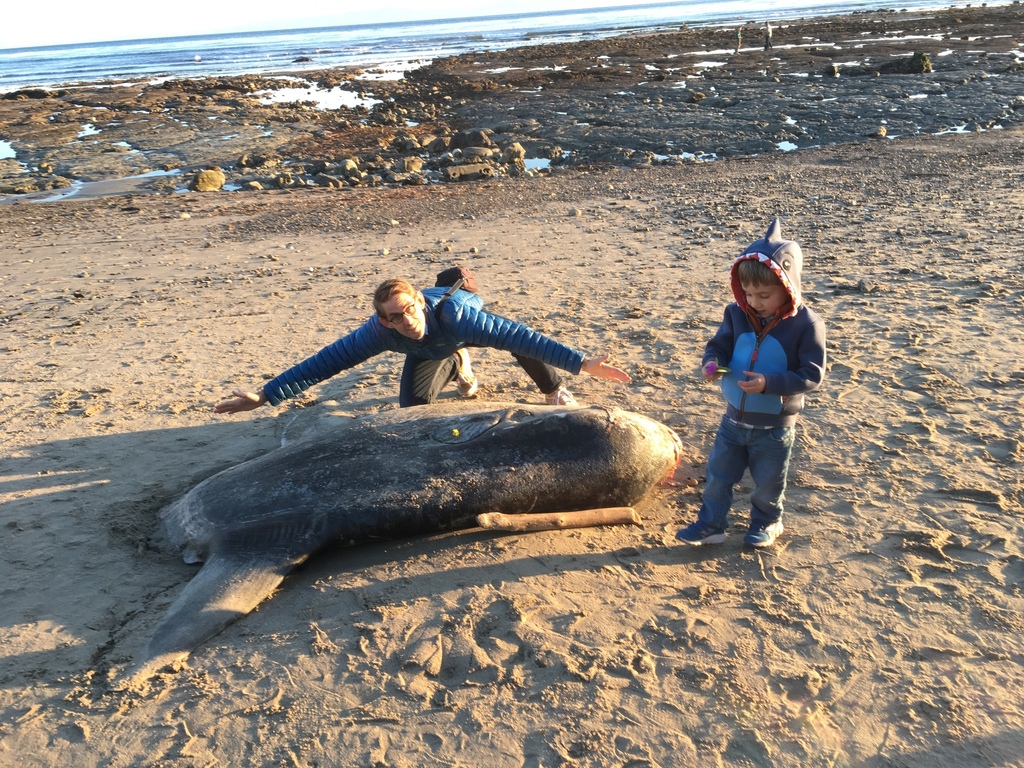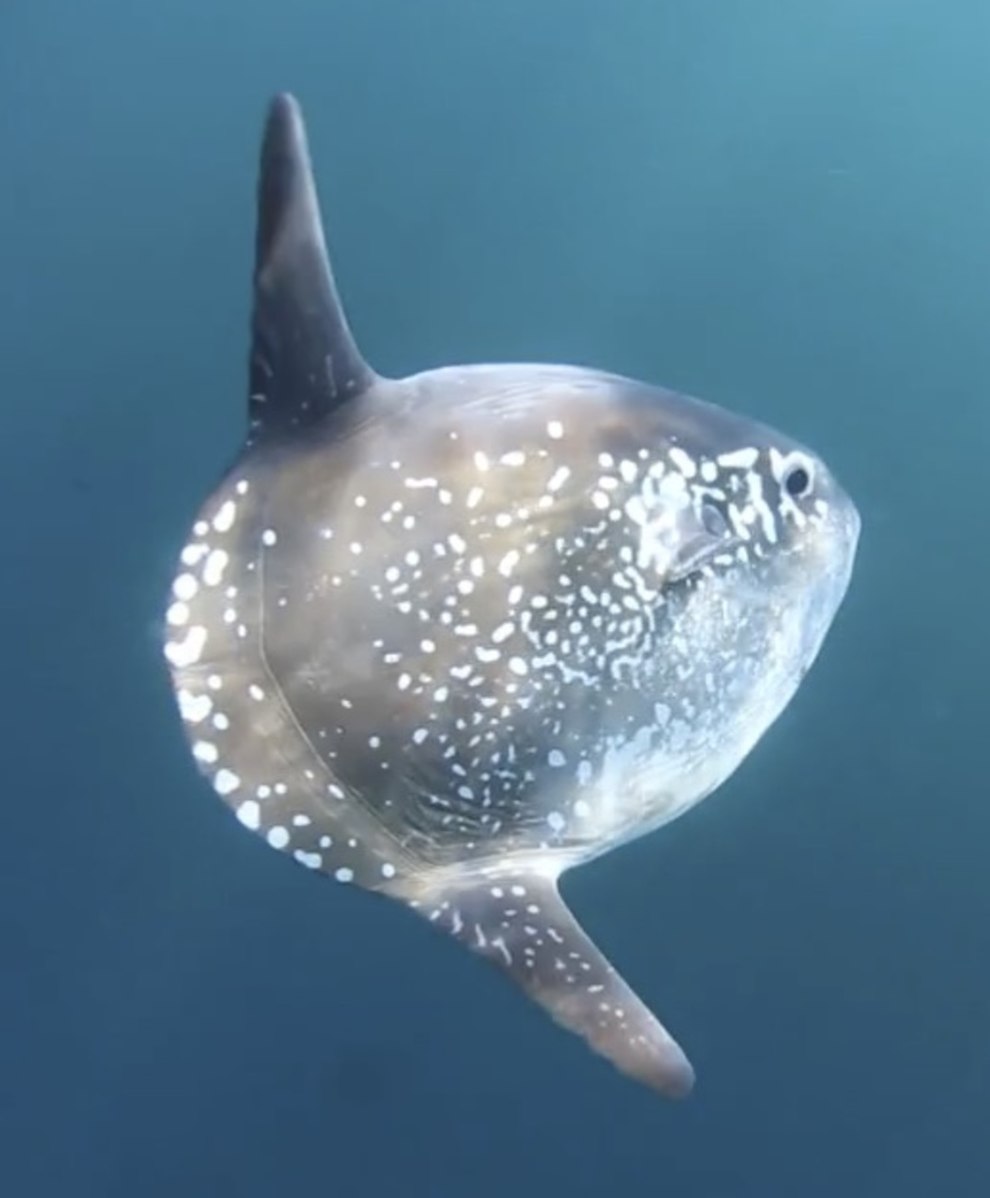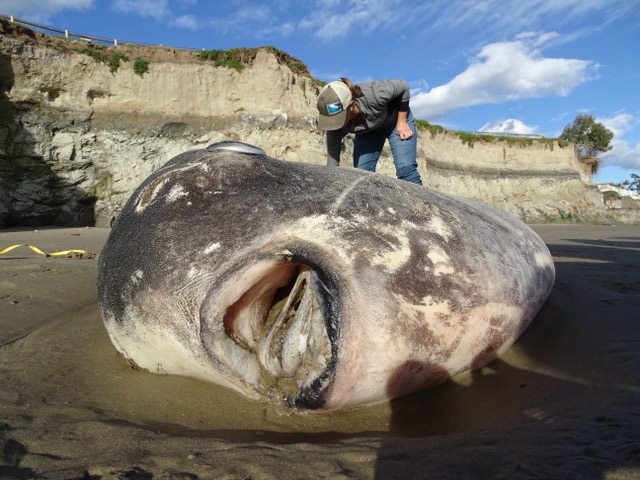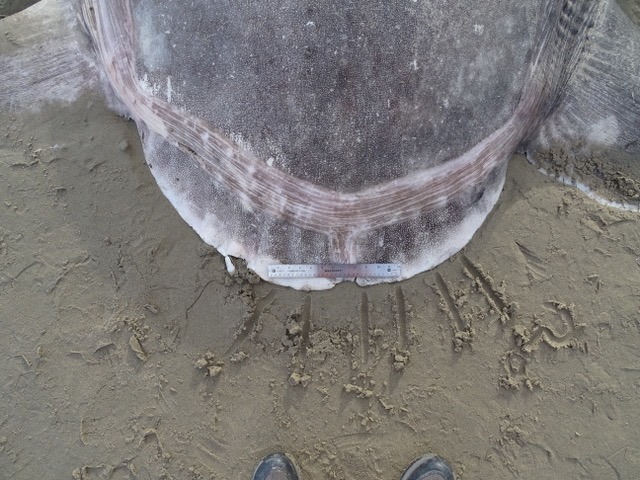
A hunt for a species’ identity crossed time zones last week when the Coal Oil Point Reserve near Isla Vista noted at its Facebook page that a very unusual fish had washed up on shore. It was likely a seven-foot Mola mola, or sunfish, conservation specialist Jessica Nielsen speculated on February 19, after an intern told her of the find. That got Tom Turner heading down to the beach for a glimpse. He’s an evolutionary geneticist with UCSB’s Ecology, Evolution, and Marine Biology department, and he posted more photos of the giant fish — flat, tailless, with dorsal and ventral fins that work like flippers — at iNaturalist. Those photos in turn alerted Ralph Forster, the fish curator of the South Australian Museum, who thought it looked a whole lot like a Mola tecta, or “hoodwinker” sunfish. That would be remarkable as the Mola tecta, first described by Marianne Nyegaard in 2017, has only been found in Southern Hemisphere waters. “[W]hat a hoot if it turns out to be the Hoodwinker!” he wrote.

Forster and Nyegaard, a sunfish expert with Australia’s Murdoch University, asked Turner to examine the “tail” section for a determinative notch, or clavus, in the fish’s nether region and for better photographs. As they waited on Turner and Nielsen, who had to wait for the tide to go back out, the fish experts in Australia debated how wrong they could be.
Once Turner and Nielsen found the fish again on February 21 — and had warned a couple of undergrads seeking a few steaks that the fish had been dead for two days — they sent photographs. Nyegaard confirmed enthusiastically, typing, “HOLY MOLA!!!! @tomleturner you are a superstar and @rfoster I am sooo excited to join you out on your brave and well-picked hoodwinker limb!!!! OMG!!!!”

She told UCSB’s The Current, “I literally, nearly fell off my chair (which I was already sitting on the edge of!). Tom Turner and Jessica Nielsen had indeed found the fish and had photographed and examined it, and taken a tissue sample. A huge amount of extremely clear photos was in my inbox, and there was just no doubt of the ID. They had also examined the clavus by hand to confirm the number of ossicles, which was just brilliant.”
The Mola mola is known to inhabit the Santa Barbara Channel, and the Mola tecta lives off the coast of Chile and South Africa as well as Down Under. One other northern specimen had beached in the Netherlands in 1890, Nyegaard’s research found. UCSB’s parasitology lab took samples of the fish to learn more, but how a Mola tecta ended up on a Santa Barbara County beach will likely be the subject of speculation for years to come.




